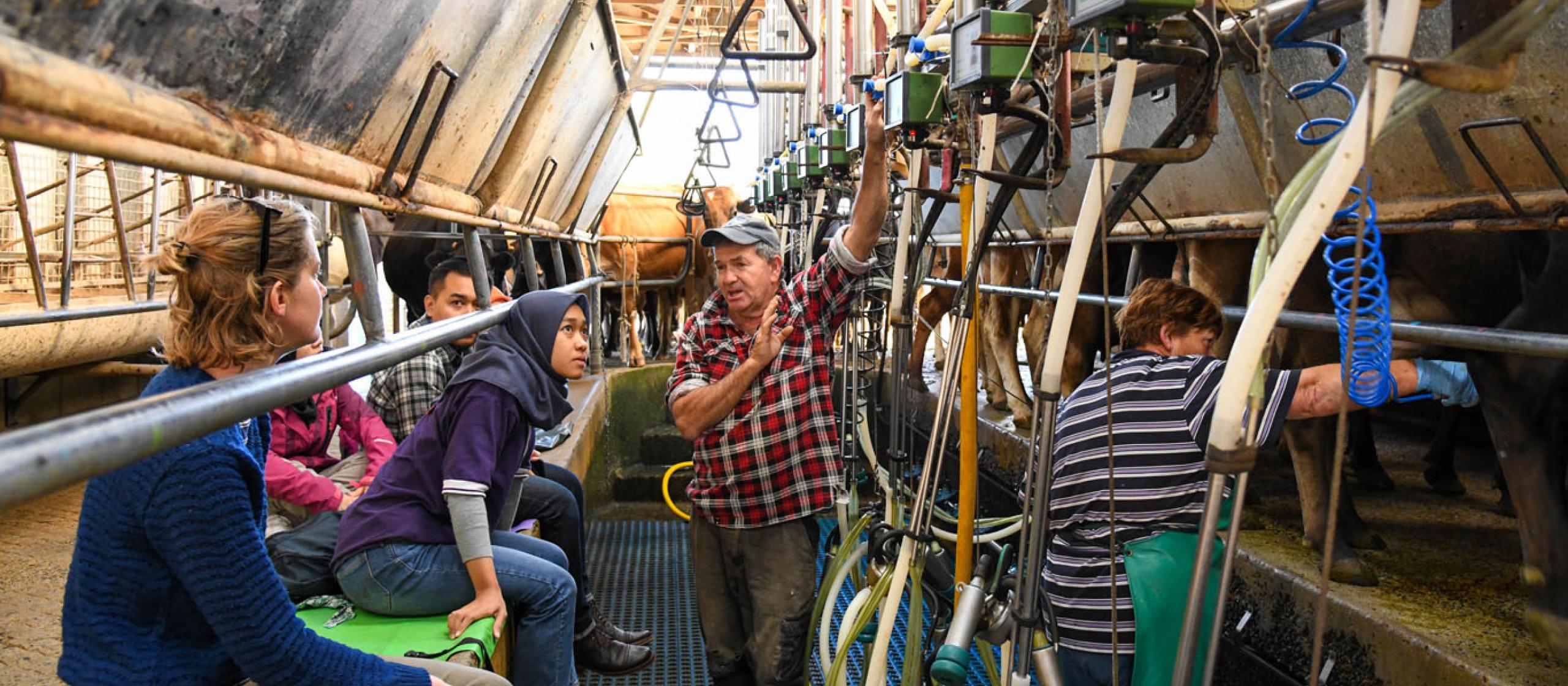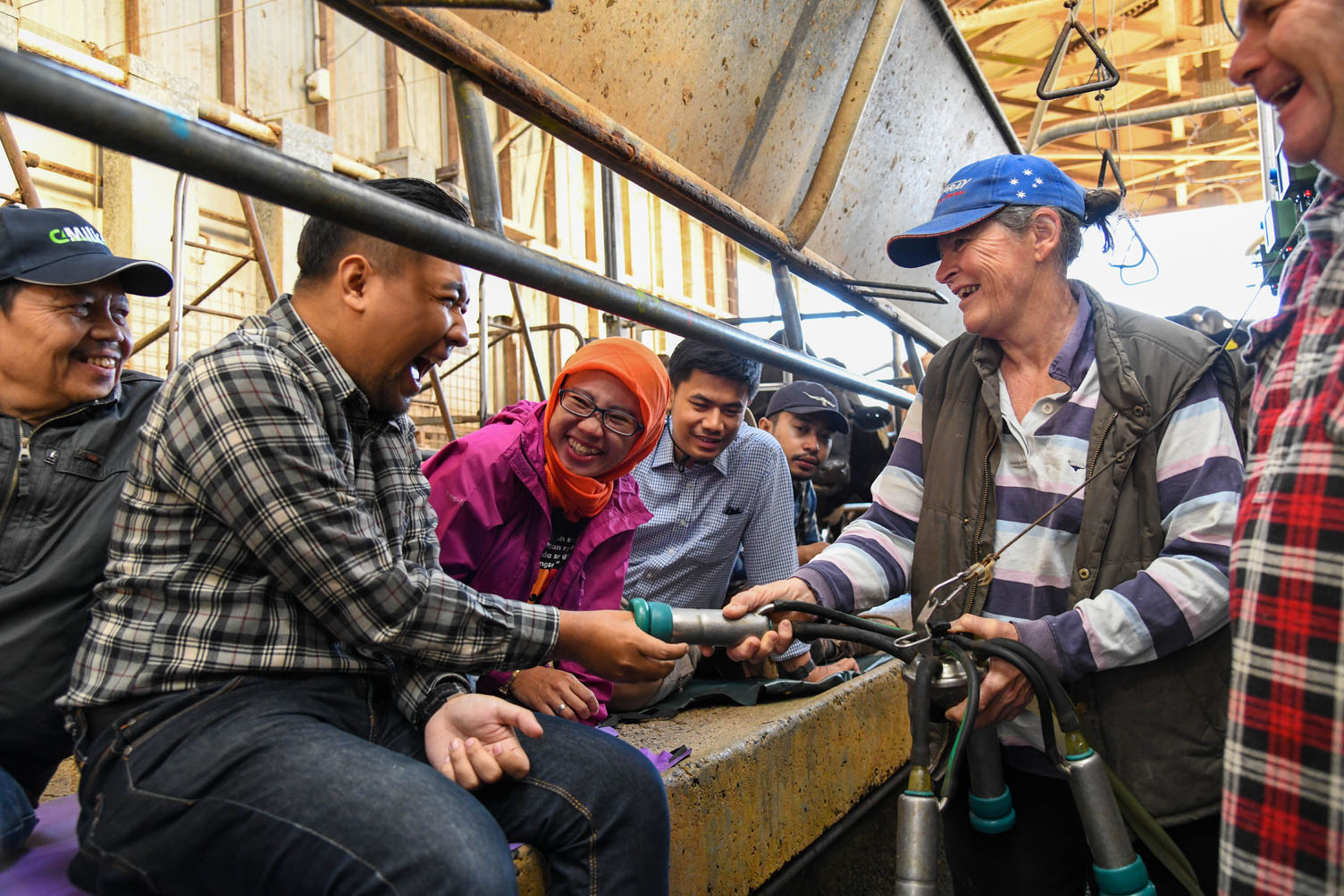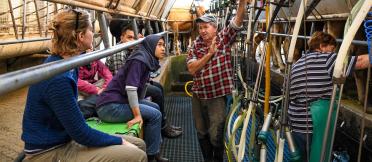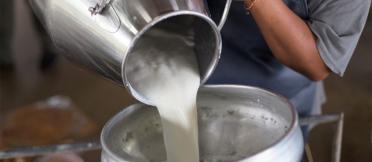- HomeHome
-
About ACIAR
- Our work
- Our people
-
Corporate information
- ACIAR Audit Committee
- Commission for International Agricultural Research
- Policy Advisory Council
- Agency reviews
- Executive remuneration disclosure
- Freedom of information (FOI)
- Gifts and benefits register
- Information publication scheme
- List of new agency files
- Contracts
- Legal services expenditure
- Privacy impact assessment register
- Commonwealth Child Safe Framework
- Benefits to Australia
- Careers
- 40 years of ACIAR
-
What we do
- Programs
- Cross-cutting areas
- Resources
- Where we work
-
Funding
- Research projects
- Fellowships
-
Scholarships
- John Allwright FellowshipScholarships to study in Australia for ACIAR partner country scientists to have Australian postgraduate qualifications
- ACIAR Pacific Agriculture Scholarships and Support and Climate Resilience Program
- Alumni Research Support Facility
- Publications
- News and Outreach
Date released
20 December 2021
Armed with teat-dip cups, bottles of iodine and knowledge about cattle health, 3 farmer groups representing about 44 different farms in the far-flung Garut district, West Java, Indonesia, instigated a movement that improved milk quality in their region.
These farmers where part of the ACIAR IndoDairy project – a 5-year program aiming to increase milk quality and quantity by 25% for at least 3,000 dairy farmers in West Java and North Sumatra.
Led by Professor Wendy Umberger from the Centre for Global Food and Resources (GFAR), University of Adelaide and President of Australia’s Policy Advisory Council for International Agricultural Research (PAC), the project included farmer discussion groups.
It was through these educational meetings that farmers learnt how teat-dipping improves milk quality.
For one group of 15 farmers in the Garut dairy cooperative KPGS Cikajang the milk quality improvement was so significant that their cooperative issued its 1500 farmers with the tools they needed to achieve the same result.
Teaching this one practice resulted in better quality milk, fewer sick cows and more milk production. The project’s work on improving milk quality through financial incentives continued in Bogor district in 2021.
This was just one example of the far-reaching effects of IndoDairy, according to project co-ordinator Mr Jack Hetherington from the University of Adelaide’s GFAR.
Extending extension
Part of IndoDairy included expanding dairy extension services to regions up to 8 hours from Jakarta, reaching farmers who hadn’t received continuity in their learning from existing services.
IndoDairy also changed the delivery of dairy extension, catering to farmers’ needs – addressing current on-farm challenges.
‘We were doing it differently to the extension delivered by government or research agencies, which have a very technology-[based] push with their approach to training,’ Mr Hetherington says. ‘A common example of this is demo-farms.
‘We opted for a participatory farmer-led approach. So, instead of telling farmers what we thought they should learn, we asked, “What do you want to do now?”. Then it was about finding that knowledge and delivering it in a way that suited.’
Alongside the discussion group activities, the project also facilitated 2 “Focus Farms” in Bogor District.
Village-level researchers
Critical to the success of IndoDairy were 5 village-level researchers (VLR). These were animal husbandry university graduates embedded in dairy communities to facilitate learning. Part of the VLR training included a trip to Australia to visit dairy farmers in Queensland.
Mr Hetherington says the VLR-facilitated farmer meetings were a contact point for farmers and cooperative staff to engage in informal information exchange while providing continuity for the project.
The VLR work was especially crucial when the COVID-19 pandemic hit, as Mr Hetherington and his colleague IndoDairy extension leader Ms Zita Ritchie were unable to travel to Indonesia.
Ms Ritchie says IndoDairy helped the VLRs improve their dairy farming knowledge, build relationships with local farmers and develop confidence to run workshops.
Now 3 VLRS have transferred these skills to an Asian Development Bank (ADB) project, training 1,000 female dairy farmers during the next 12–18 months.
Training women
VLR team leader Mr Rio Muhammad Fauzan is part of the new women’s training project.
One of his favourite parts of IndoDairy was training small dairy cooperatives and witnessing improved farming practices. A stand-out was a turnaround in profit and production for a farmer called Endang.
‘[Endang] used to feed his cows with traditional farming practices, which resulted in low milk production, low reproduction performance as well as low profit,’ Mr Fauzan says.
‘When he joined the IndoDairy activities, his mindset changed. He understood the fundamentals of how to feed his cows properly and how to choose feed appropriately. Consequently, it changed his farm performance to a high-yield farm and high-profit business.’
Confidence, understanding farm financials, feed and forage management and extension techniques were just some of the skills VLR Ms Attin Syahnurotin learnt through IndoDairy.
She’s also working with the ADB project and already has experience in empowering female farmers thanks to the IndoDairy women’s discussion group.
Key points
- A project in Indonesia has helped farmers produce more milk and better-quality milk – all with fewer sick cows – to support higher incomes.
- The result has been achieved through a farmer-led approach that trains village-level researchers to train farmers in improved dairy practices.
- Dairy extension services are now reaching regions and farmers not serviced previously.







